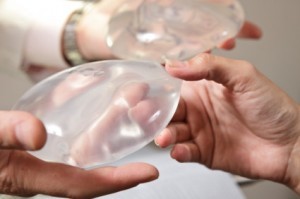Complications of Breast Augmentation – Implants, Enhancement
In breast augmentation surgery, silicone gel or saline-filled implants are used either to produce fuller breasts (breast enlargement) or restore breast volume after pregnancy or weight loss (breast enhancement). The decision to have breast augmentation surgery should be taken only after careful consideration of the risks and dangers associated with the surgery and the potential complications.
Dangers of Breast Augmentation Surgery
Infection
Post-operative infection usually presents with breast swelling, pain and tenderness, redness visible on the skin surface and fever as the infection progresses. Intravenous (IV) antibiotics may have to be commenced if the patient is not responding to oral drugs and in severe cases, the implants may have to be removed and can be reintroduced after complete wound healing. With the increased incidence of methicillin-resistant Staphylococcus aureus (MRSA superbug) infections, necrotizing fasciitis is a risk.

Picture of Breast Implants
Toxic Shock Syndrome
This may be caused by the toxins produced by bacteria like Staphylococcus aureus and Streptococcus pyogenes. Apart from a high fever, there is also a reduction in normal blood pressure, itchy skin rash and the early signs of organ failure are evident. Immediate medical treatment is necessary.
Bleeding
Post-operative bleeding into the implant pocket will produce swelling, associated with increasing breast pain and bruising (hematoma). The implant will have to be removed, the cause of bleeding identified and sealed or cauterized, and the implant is then reinserted.
Scarring
Depending on the skill of the surgeon as well as the tendency for keloid scarring, breast augmentation may result in significant scarring which can be quite traumatic to the patient.
Anesthesia
Dangers associated with anesthesia vary based on individual reaction and other underlying chronic conditions. This can vary from allergic reactions, to changes in blood pressure, heart rate or rarely even result in death.
Capsular Contracture
This is the formation of firm scar tissue around the implant, causing hardening and distortion of the breast, along with pain. Surgery will be needed, either for incision of the scar capsule around the implant or to remove the scar capsule totally. The implant may be replaced at the time of surgery but recurrent capsular contracture is a possibility.
Disfigured Breasts
This may be caused by breast tissue being stretched out of shape by the implants. This is seen when the implants are removed permanently and not replaced, either because of recurrent capsular contracture or for any other reason. Wrinkling of the skin over the implant may occur and can be severe.
Asymmetry
Implants may ‘slip’ from their original position and shift up higher, lower down or to the side, causing asymmetry. Persistent breast swelling may also cause asymmetry and shift the orientation of the nipple.
Calcification
Hardening of the scar capsule may occur in implants which have been in position for many years.
Implant Rupture or Leaks
Breast implants may rupture or leak into surrounding tissue causing deflation of the breast.
Sensation
Numbness, tingling or even persistent pain may occur after breast augmentation surgery.
Other Systemic Complications
Deep vein thrombosis (DVT), cardiac and pulmonary complications may arise as a result of the breast augmentation surgery although this is more likely to occur in older patients or those with pre-existing chronic conditions.



